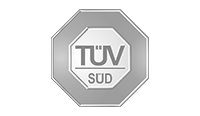Request a Demo
Trusted by leading brands, retailers, manufacturers and service providers across industries such as:
















Sustainability managers are facing an uphill battle as organizations fall short in transitioning to more sustainable . With a growing number of government regulations and industry standards around emissions, waste management, and resource usage, organizations are struggling to keep up. Organizations are increasingly recognizing the value of implementing sustainable practices, not just because of environmental concerns, but also due to its impact on employee retention, brand reputation, and customer loyalty. Many projects require significant effort and investment, leading to the appointment of a new breed of sustainability leaders and support teams. Sustainability champions must ensure that their goals align with overall business strategy and objectives. Success is achieved where sustainability considerations are integrated into everyday business operations, decision-making processes, and performance evaluations. A major focus is on the supply chain, affecting a wide range of people and processes, internally and externally.
As a sustainability leader this role delivers a wide range of challenges. Success depends on the extent to which the organization’s leaders take a holistic approach to driving growth, while keeping sustainability at the core.
Few universally accepted global standards are available to guide organizations, leading to inconsistency in approaches and reporting. Although many sustainability initiatives are focused on achieving Environmental, Social, and Governmental (ESG) corporate goals, there may be conflicting internal business priorities. Sustainability teams must navigate a complex web of operational obstacles, including:
There is often a struggle to gain the necessary support and resources from top-level leadership to implement meaningful sustainability projects across an organization. Obtaining a sufficient budget can be challenging, meaning fewer people are dedicated to sustainability, leading to overburdened teams. The cost of implementing technology tools to track and monitor sustainability initiatives may be a limiting factor. Securing the right level of leadership backing and budget allocation remains a persistent hurdle.
Until now, sustainability departments have hired more people and added headcount to manage the increasing effort for sustainability. However, it will eventually also be about productivity and efficiency in the work they do. Organizations cannot hire endlessly, as they cannot increase overhead costs too much because customers won’t pay the price, at least in most cases. So tools that help collect the required data and enable all managers to do their jobs better and faster will be crucial. The end goal is getting more things done efficiently.
Cross-functional collaboration is often hindered when organizations operate in silos. Sustainability managers are prevented from driving holistic, enterprise-wide sustainability programs. Gaining active support from all levels and functions in the organization is crucial. Externally, ensuring that suppliers and third-party service providers adhere to agreed sustainability standards and practices requires constant monitoring and collaboration. Effectively communicating sustainability efforts and achievements to other external stakeholders, such as customers, investors, and regulators is also essential. Breaking down internal barriers and aligning diverse stakeholders behind shared sustainability goals remains an ongoing challenge.
Traditional ways of working are deeply ingrained into organizational processes, making it challenging to drive the necessary transformational changes. Employees may resist change because they believe initiatives will be too costly or because they are not convinced of the value they will deliver. Encouraging and implementing innovative technology solutions for sustainability within a corporate setting requires significant change management. Fostering a true culture of sustainability within the organization requires ongoing education, engagement, and a shift in mindset. Overcoming this inertia and resistance to change is crucial for sustainability leaders seeking to embed sustainable practices across the business.
Lack of visibility and transparency into operational data is a problem. The sheer volume of unstructured data makes it difficult for sustainability leaders to demonstrate tangible progress and impact. Gathering accurate and verified data on environmental impact, social initiatives, and governance practices is not easy. Achieving full traceability of products and materials throughout the supply chain can be daunting, but necessary. Effectively analyzing sustainability data to derive actionable insights requires advanced tools and specialized expertise that many organizations lack. Overcoming these data-related hurdles is critical for sustainability leaders to credibly measure performance and drive meaningful change.
Establishing clear and meaningful metrics to measure the impact of sustainability initiatives is important, but organizations often struggle with robust, reliable data frameworks. Sustainability leaders must navigate a complex web of reporting requirements, frameworks, and stakeholder demands – covering environmental, social and governance (ESG) metrics. Demonstrating the tangible benefits and ROI of environmental initiatives is difficult due to changing regulations and standards. Addressing these reporting and compliance challenges requires a strategic, well-resourced approach, effective sustainability leadership, and a commitment to continuous improvement across the organization and its extended value chain
The sustainability function will only be successful if it ensures fully committed top-level support. CEOs and other senior leaders must be seen to actively champion policies and projects. They must provide the necessary financial and other resources and deliver the clear mandate for sustainability commitments and initiatives. They can play a crucial role in eliminating organizational silos and encouraging greater cooperation between departmental heads in Procurement & Sourcing, Product Development, Finance, IT and Operations, and the Sustainability team. Top management must regularly evaluate the tools, processes and collaborations and make necessary improvements to drive success.
To overcome a lack of internal collaboration companies must engage in extensive stakeholder education and communication. This will ensure that everyone throughout the organization understands the importance of sustainability and how it benefits not only the environment but also the company and its stakeholders. Sustainability leaders need to showcase to other functions how sustainability projects are related to supporting the organization’s core strategy, which will make a stronger case for investment and implementation. By encouraging deeper collaboration and knowledge-sharing between the sustainability function and other key departments we can leverage valuable synergies.
Sustainability principles and practices must become engrained into the organization’s overall culture, mindset, and decision-making processes. This has become the norm in many leading organizations across different industries. Market leaders in their various sectors are championing sustainability such as the Ford Motor Company in clean technology, and Unilever and Johnson and Johnson in fast-moving consumer goods. Unilever is one of the fastest-moving consumer goods companies and is also renowned for its goal to create a waste-free world. Unilever is not only cutting its plastic usage but also fighting against food waste in its manufacturing.
Patagonia, a global leader in high-quality outdoor clothing that is built to last, uses eco-friendly materials when creating their products and packaging. The company reduces waste through recycling returns and other sustainable materials during the manufacturing phase. Patagonia also seeks to communicate its sustainability goals by educating consumers about the responsible consumption of clothing. The company promotes the “buy less, demand more” motto throughout its business model.
Another exemplary case is Mammut, an outdoor apparel and equipment retailer, which has made sustainability a fundamental part of its business model and corporate culture. Mammut has deeply embedded sustainability throughout the organization, with extensive employee training, incentives, and initiatives that promote sustainable behaviors both at work and in employees’ personal lives. This has helped foster a strong sustainability mindset across the entire workforce.
These companies promote sustainability as a core value and engage employees at all levels through education and involvement in sustainability projects.
Sustainability leaders must first establish clear key performance indicators (KPIs) for their sustainability initiatives. Next provide comprehensive, data-driven frameworks for measuring and reporting on sustainability performance. Transparent and regular reporting on sustainability performance against KPIs will promote continuing and growing support from stakeholders.
To tackle this data challenge, companies are increasingly investing in tools and technologies that offer greater transparency of information and that also have monitoring capabilities.
Companies need a structured method for evaluating, prioritizing, and implementing new sustainability-focussed solutions. The aim is to ensure efficient and effective integration with other business data to provide a comprehensive view of the organization’s achievements.
Create programs to encourage and reward innovative sustainability solutions. Promote active involvement and provide opportunities for ongoing learning and development in sustainability practices and trends. To foster an ethos of accountability, clearly define roles and responsibilities and include sustainability performance metrics in employee evaluations and incentives. Let’s encourage staff to go beyond compliance by participating in industry networks and forums to gain knowledge and best practices.
The time to act is now. By following these guidelines, organizations can create an empowering environment for their sustainability teams. Investing in the right technology solutions and tools will allow them to drive effective sustainability objectives. Challenges in delivering successful sustainability results can be overcome by actively engaging in stakeholder education and communication. Continuous improvement is possible through developing internal expertise and applying technology solutions strategically. The future is ours to shape – the opportunity is here, let’s seize it together.